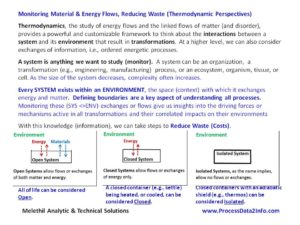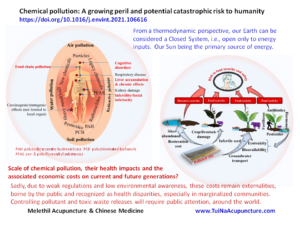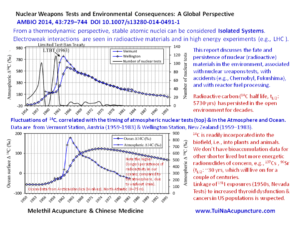Monitoring Material & Energy Flows to Reduce Global Waste
As the world struggles to bring the impacts of runaway energy releases into the environment (i.e., global warming) under control, we are challenged to consider the inequitable burdens that people living in the wealthy nations of the world have imposed, and continue to impose, upon those living in less industrially developed nations.
For over fifty years, we have known that a life lived in the industrially developed parts of the world will cause 5-10 times the environmental impacts of a life lived in the less industrially developed nations, on a per capita basis.
Much of this large environmental footprint today is associated with socioculturally reinforced consumption patterns. Patterns of thoughtless waste.
As Open Systems WE need to recognize that all life is linked, for better or for worse. Global manifestations of uncontrollable patterns of Wind & Water will spread Disorder and teach us hard lessons, in the decades to come.
So what can we, those who live in the US and the EU, do to reduce these impacts?
Avoid excess. Be less wasteful. Consume less. Develop renewable resources. Share.
These changes will both save and improve the quality of lives, both in the West and around the world.
Recognizing Pollutions’ Health (Economic) Impacts
From a thermodynamic perspective, our Earth can be considered a Closed System, i.e., open only to energy inputs. Our Sun is the primary source of energy, with regard to Life. Mass fluctuations associated with atmospheric leakages and meteoric contributions are minimal.
When we discharge pollutants and toxic materials into the environment, they will spread from their sources of release. Soon, due to dispersive mechanisms, i.e., entropic forces, they will be found far away from the points of release, as analytical chemistry clearly demonstrates. These toxins then enter our bodies, via bioaccumulative processes, up the food chain.
Avoiding pollutant and toxin releases would be best, but our Industrial Age could not function without such environmental impacts, borne by the ecosphere at large, i.e., both plants and animals. This is why containment of pollutants and toxins, at the source, is so critical
Sadly, due to weak regulations and low environmental awareness by the public at large, the costs associated with pollution remain externalities, to be borne by the public (i.e., taxpayers) and recognized as health disparities, especially in marginalized communities. Slide
Radioactive Material Fallout & Environmental Consequences
From a thermodynamic perspective, stable atomic nuclei can be considered Isolated Systems. Atomic nuclei are shielded from interactions with the external world by a distant shield of electrons, governed by the rules of quantum elctrodynamics (QED).
Things are slightly different In unstable nuclei, e.g., radioactive materials used in fission rectors and bombs , where the beta decay (electroweak) process converts a neutron into a proton and an antineutrino. Nuclear fission based bombs, like fission based reactors, exploit the instability of nuclei with a relative surplus of neutrons by bombarding them with additional neutrons, causing them to fragment and to generate large amounts of energy.
Since energy conservation rules apply to building and operating fission reactors, their embodied greenhouse gas (GHG) footprints are very large.
Working with nuclear fission processes also requires the active management of large amounts of long lived radioactive products, i.e., radioactive wastes.
Many of these radioactive nuclei will enter the environment (i.e., air and water) and can become incorporated into the biosphere, where they will reside for centuries/millennia.


